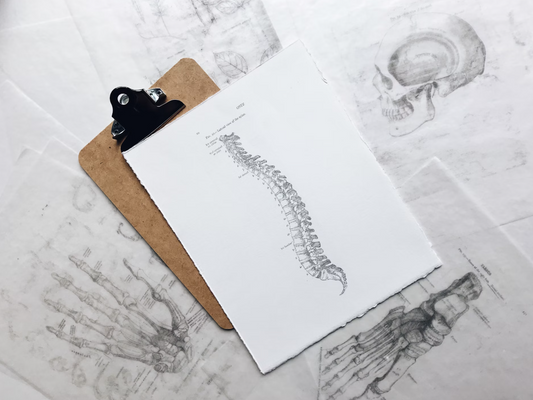Glossary: What is COPD
Chronic Obstructive Pulmonary Disease (COPD) is a progressive lung condition that significantly impacts breathing. Understanding COPD is crucial for individuals at risk or those already diagnosed, as well as for their families and caregivers. This article aims to demystify the condition by providing a detailed overview of its definitions, anatomy, types, symptoms, treatments, prognosis, and preventative measures.
Understanding COPD
Definition of COPD
COPD is an umbrella term used to describe a group of chronic lung diseases that result in obstructed airflow from the lungs. It includes conditions such as chronic bronchitis and emphysema. The condition is characterized by long-term respiratory symptoms and airflow limitation, which can exacerbate over time, making it progressively harder to breathe.
The primary cause of COPD is usually long-term exposure to lung irritants, with cigarette smoke being the most common culprit. Other factors include air pollution, occupational hazards, and genetic factors. COPD is not completely reversible, but early diagnosis and proper management can significantly improve quality of life.
The Prevalence of COPD
According to the World Health Organization, COPD is one of the leading causes of morbidity and mortality globally. It affects millions of people, with significant numbers remaining undiagnosed. Various studies indicate that over 300 million people worldwide suffer from the disease, and this number is projected to rise due to increasing smoking rates and environmental pollution.
Particularly vulnerable groups include older adults and individuals with a history of smoking or exposure to industrial pollutants. Understanding the prevalence of COPD helps in raising awareness and encouraging early detection and prevention strategies. Furthermore, the economic burden of COPD is substantial, with healthcare costs for treatment and management placing a strain on both individuals and healthcare systems. This underscores the importance of public health initiatives aimed at reducing risk factors and promoting lung health.
In addition to the direct health impacts, COPD can significantly affect the emotional and psychological well-being of patients. Many individuals experience anxiety and depression due to the limitations imposed by their condition, which can lead to social isolation and a decreased quality of life. Support groups and mental health resources are crucial for helping patients cope with these challenges, emphasizing the need for a holistic approach to COPD management that addresses both physical and mental health aspects.
The Anatomy of COPD
The Role of the Lungs
The lungs play a crucial role in respiratory function; they facilitate the exchange of oxygen and carbon dioxide, essential for sustaining life. In COPD, the structural integrity of the lungs is compromised. The air sacs, or alveoli, can become damaged or destroyed, leading to reduced lung surface area and decreased oxygen absorption. This diminished capacity not only affects the lungs but also has a cascading effect on the entire body, as organs and tissues begin to suffer from a lack of oxygen, which is vital for their proper functioning.
The inflammation of the airways is another significant aspect of COPD, which narrows the air passages and restricts airflow. This leads to increased resistance during breathing and often results in a sensation of tightness in the chest. Chronic inflammation can also cause the production of excess mucus, which further clogs the airways and complicates the breathing process. Understanding how lungs function is essential for grasping the implications of COPD on overall health, as it highlights the interconnectedness of respiratory health with systemic well-being.
How COPD Affects Breathing
Breathing is a complex process that involves not just the lungs but also the diaphragm and various muscles in the chest. When COPD develops, the inflammation and damage to lung tissues can significantly impair these processes, resulting in difficulty breathing, especially during physical activities. This shortness of breath can lead to a decrease in physical stamina and overall fitness. Over time, individuals may find themselves avoiding activities they once enjoyed, leading to a decline in both physical and mental health.
The gradual reduction in airflow can also cause an increase in trapped air in the lungs, further diminishing their efficiency. This leads individuals to develop a routine that may restrict physical exertion to prevent discomfort, which can ultimately produce a cycle of decreased activity and increased health complications. Additionally, the psychological impact of coping with a chronic illness like COPD can manifest in anxiety and depression, further complicating the management of the condition. Patients often benefit from pulmonary rehabilitation programs that not only focus on improving physical endurance but also provide support for mental well-being, emphasizing the importance of a holistic approach to treatment.
Types of COPD
Chronic Bronchitis
Chronic bronchitis is characterized by inflammation and irritation of the bronchial tubes, which carry air to and from the lungs. Individuals with chronic bronchitis often experience a persistent cough that produces mucus, commonly referred to as "smoker's cough." This can be particularly problematic as it may lead to frequent respiratory infections.
Over time, the ongoing inflammation causes the airways to narrow, resulting in limited airflow and difficulty in breathing. These symptoms can significantly impair daily activities and contribute to decreased lung function over time. The persistent cough can also disrupt sleep patterns, leading to fatigue and a reduced quality of life. Moreover, exposure to irritants such as tobacco smoke, air pollution, and dust can exacerbate the condition, making it crucial for individuals to identify and minimize these triggers.
Emphysema
Emphysema involves the gradual damage of the alveoli, the tiny air sacs where oxygen exchange occurs. With emphysema, the walls of the alveoli lose their elasticity and become overstretched, which reduces the surface area available for oxygen absorption. This condition leads to breathing difficulties, especially during physical activities.
Individuals with emphysema may also experience a sensation of tightness in the chest, which can be distressing and may lead to anxiety about breathing. As the disease progresses, simple tasks like climbing stairs or walking short distances can become increasingly challenging. The combination of chronic bronchitis and emphysema, known as COPD, underscores the importance of comprehensive treatment plans that may include medications, pulmonary rehabilitation, and lifestyle changes such as smoking cessation and regular exercise to enhance lung function and overall well-being.
Symptoms and Diagnosis of COPD
Common Symptoms
Early symptoms of COPD can be subtle and may include a persistent cough, increased mucus production, and shortness of breath during physical activity. As the disease progresses, symptoms can worsen, leading to increased difficulty in breathing, especially during exertion. Patients often describe a sensation of tightness in the chest, which can be distressing and may limit their ability to engage in everyday activities.
Other common symptoms may include fatigue, wheezing, and frequent respiratory infections. Recognizing these symptoms early is critical for seeking medical attention and preventing further lung damage. Additionally, individuals with COPD may experience a decline in their overall quality of life, as chronic breathlessness can lead to anxiety and depression, further complicating their condition. Lifestyle changes, such as quitting smoking and avoiding pollutants, can significantly impact symptom management and overall health.
Diagnostic Tests for COPD
To diagnose COPD, healthcare professionals typically perform a combination of assessments, including a thorough medical history, physical examination, and lung function tests like spirometry. Spirometry measures how much air a person can inhale and exhale and how quickly they can do so. This test is crucial, as it not only confirms the diagnosis but also helps in determining the severity of the disease, guiding treatment decisions.
Additional tests such as chest X-rays or CT scans may be used to visualize lung structure and rule out other conditions. These imaging tests can help identify emphysema, a common form of COPD, by showing damage to the air sacs in the lungs. Early diagnosis is essential for effective treatment and management of COPD. Furthermore, blood tests may be conducted to check for alpha-1 antitrypsin deficiency, a genetic condition that can contribute to lung disease. Understanding the full scope of a patient's health can lead to a more tailored and effective management plan, improving outcomes and enhancing the quality of life for those affected by COPD.
Treatment and Management of COPD
Medications for COPD
While there is no cure for COPD, a variety of medications can help manage symptoms and improve quality of life. These may include bronchodilators, which relax the muscles around the airways, making it easier to breathe, and corticosteroids, which reduce inflammation in the airways. Long-acting bronchodilators are often preferred for daily management, while short-acting options may be used as needed for immediate relief. Additionally, combination inhalers that include both bronchodilators and corticosteroids can simplify treatment regimens and enhance adherence.

In severe cases, healthcare providers may recommend oxygen therapy or pulmonary rehabilitation programs that combine exercise, education, and support to assist individuals in managing their condition. These programs are tailored to each patient’s needs and can significantly improve exercise capacity and overall well-being. Furthermore, new medications, such as phosphodiesterase-4 inhibitors, are being explored to provide additional options for patients with chronic bronchitis, a common form of COPD.
Lifestyle Changes for COPD Management
In addition to medication, lifestyle changes play a pivotal role in managing COPD. Quitting smoking is the single most effective step to halt the progression of the disease. Moreover, incorporating regular exercise tailored to individual capacity can help improve lung function and physical endurance. Activities like walking, swimming, or cycling can enhance cardiovascular health and strengthen respiratory muscles, making everyday tasks easier. It is essential for patients to consult with their healthcare providers to develop a safe and effective exercise plan that considers their specific limitations.
A nutritious diet, coupled with adequate hydration, also supports overall health and lung function. Foods rich in antioxidants, such as fruits and vegetables, can help combat oxidative stress in the lungs. Staying informed about the disease and connecting with support groups or healthcare professionals can provide critical guidance and reassurance. Engaging with others who share similar experiences can foster a sense of community and encourage adherence to treatment plans, ultimately leading to better health outcomes. Additionally, learning stress management techniques, such as mindfulness or breathing exercises, can further enhance quality of life for those living with COPD.
The Prognosis of COPD
Life Expectancy with COPD
The prognosis for individuals with COPD can vary significantly based on several factors, including the severity of the disease, age, overall health, and adherence to treatment. Life expectancy can be negatively impacted if COPD remains undiagnosed or uncontrolled. However, many individuals with COPD live full lives, especially with ongoing treatment and lifestyle modifications.

Monitoring the progression of the disease regularly and adjusting treatment plans accordingly can improve outcomes and overall well-being. Regular check-ups with healthcare providers not only help in tracking lung function but also allow for timely interventions that can mitigate exacerbations. Additionally, incorporating pulmonary rehabilitation programs can greatly enhance lung capacity and endurance, contributing to a more active lifestyle.
Quality of Life with COPD
Quality of life for those living with COPD can be significantly affected by physical and emotional symptoms. Many individuals face challenges such as anxiety and depression due to the limitations posed by the disease. Engaging in supportive communities, counseling, or structured support can enhance emotional well-being. Support groups, whether in-person or online, provide a platform for sharing experiences and coping strategies, fostering a sense of belonging and understanding among those affected.
Ensuring proper education about the disease and how to manage it is vital for improving life quality. Individual empowerment through knowledge is key to coping successfully. Patients who understand their condition are more likely to adhere to treatment regimens and make necessary lifestyle changes, such as quitting smoking or adopting a healthier diet. Furthermore, learning about breathing techniques and the importance of physical activity can empower individuals to take control of their health, leading to improved lung function and overall vitality. Engaging family members in the education process can also create a supportive environment that encourages adherence to treatment and fosters open communication about the challenges faced in daily life.
Prevention of COPD
Risk Factors for COPD
Identifying and managing risk factors is crucial in the prevention of COPD. Key risk factors include smoking, long-term exposure to secondhand smoke, air pollution, occupational dust, and chemical exposure. Additionally, a family history of lung disease may increase susceptibility to developing COPD.
By recognizing these risks, individuals can take proactive measures to minimize exposure, particularly in workplace environments or through lifestyle choices. For instance, those working in industries such as construction, mining, or manufacturing should utilize protective equipment and adhere to safety protocols to limit inhalation of harmful substances. Furthermore, individuals living in urban areas can benefit from staying indoors on days when air quality is poor, thereby reducing their exposure to environmental pollutants.
Preventive Measures Against COPD
Preventing COPD starts with avoiding tobacco and other harmful inhalants. Maintaining air quality both indoors and outdoors is also essential; this includes practicing safe measures around pollutants and ensuring proper ventilation in living areas. Utilizing air purifiers and regularly changing HVAC filters can significantly improve indoor air quality, while also reducing allergens that may exacerbate respiratory conditions.
Regular health screenings and consultations with healthcare providers can lead to early detection and management of respiratory issues, aiding in overall lung health. Engaging in physical activities, such as walking or swimming, can strengthen lung function and improve overall cardiovascular health. Additionally, adopting a diet rich in antioxidants, such as fruits and vegetables, can help combat oxidative stress in the lungs. By taking collective steps toward better lung health, individuals can significantly reduce the risk of developing COPD.
In conclusion, COPD is a serious but manageable condition. Understanding its implications, following treatment plans, and making informed lifestyle choices can empower individuals to lead fulfilling lives despite their diagnosis. Remember, knowledge is power when it comes to managing chronic conditions.
If you're seeking to take control of your COPD management and gain deeper insights into your respiratory health, Alveo is here to support your journey. With the world's first Continuous Respiratory Wearable, you can monitor your breathing patterns in real-time, receive personalized breathing routines, and understand how your environment affects your lung health—all with the comfort of a device designed for everyday use. Don't miss out on the opportunity to enhance your quality of life. Sign up on our waiting list today and be among the first to experience the benefits of Alveo's innovative respiratory wearable.




